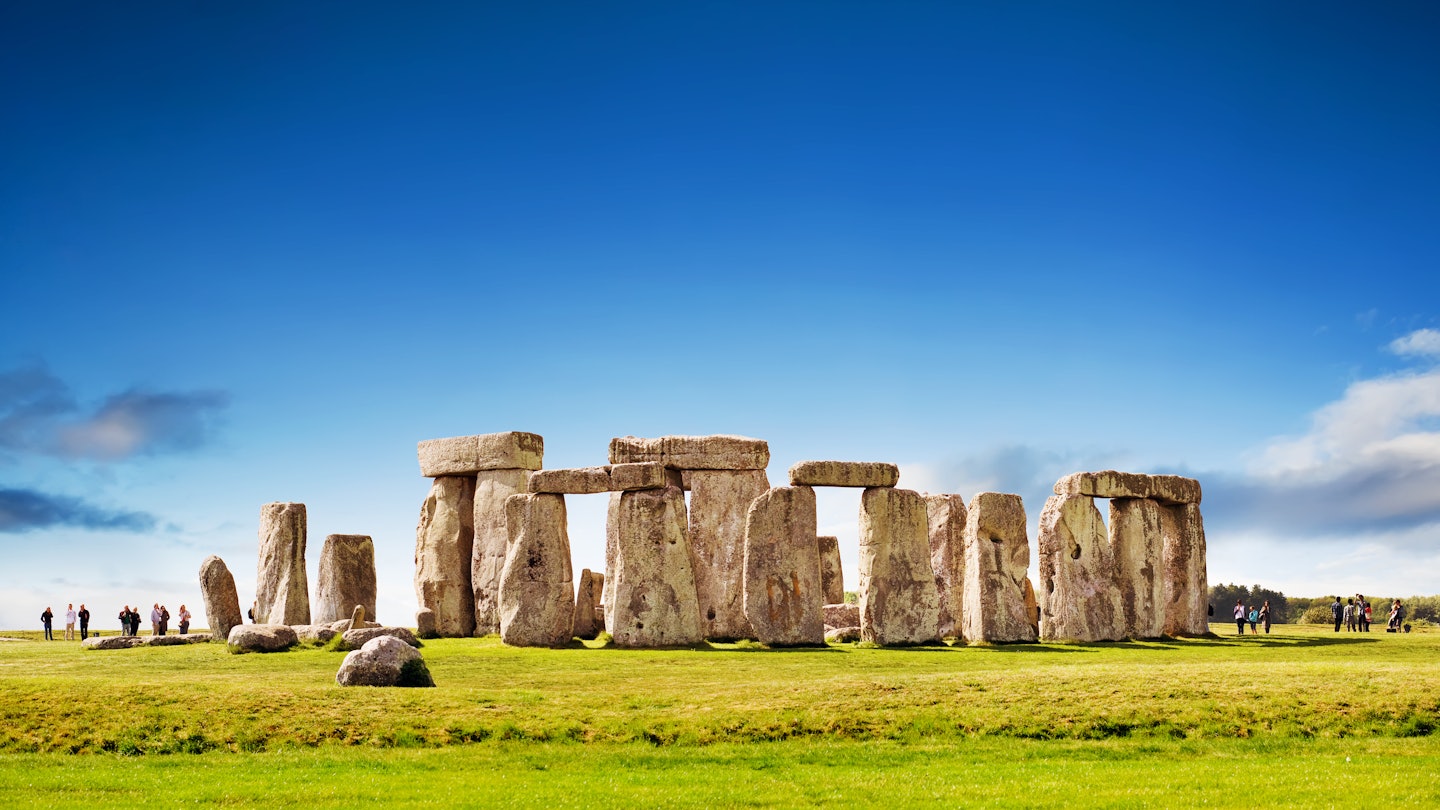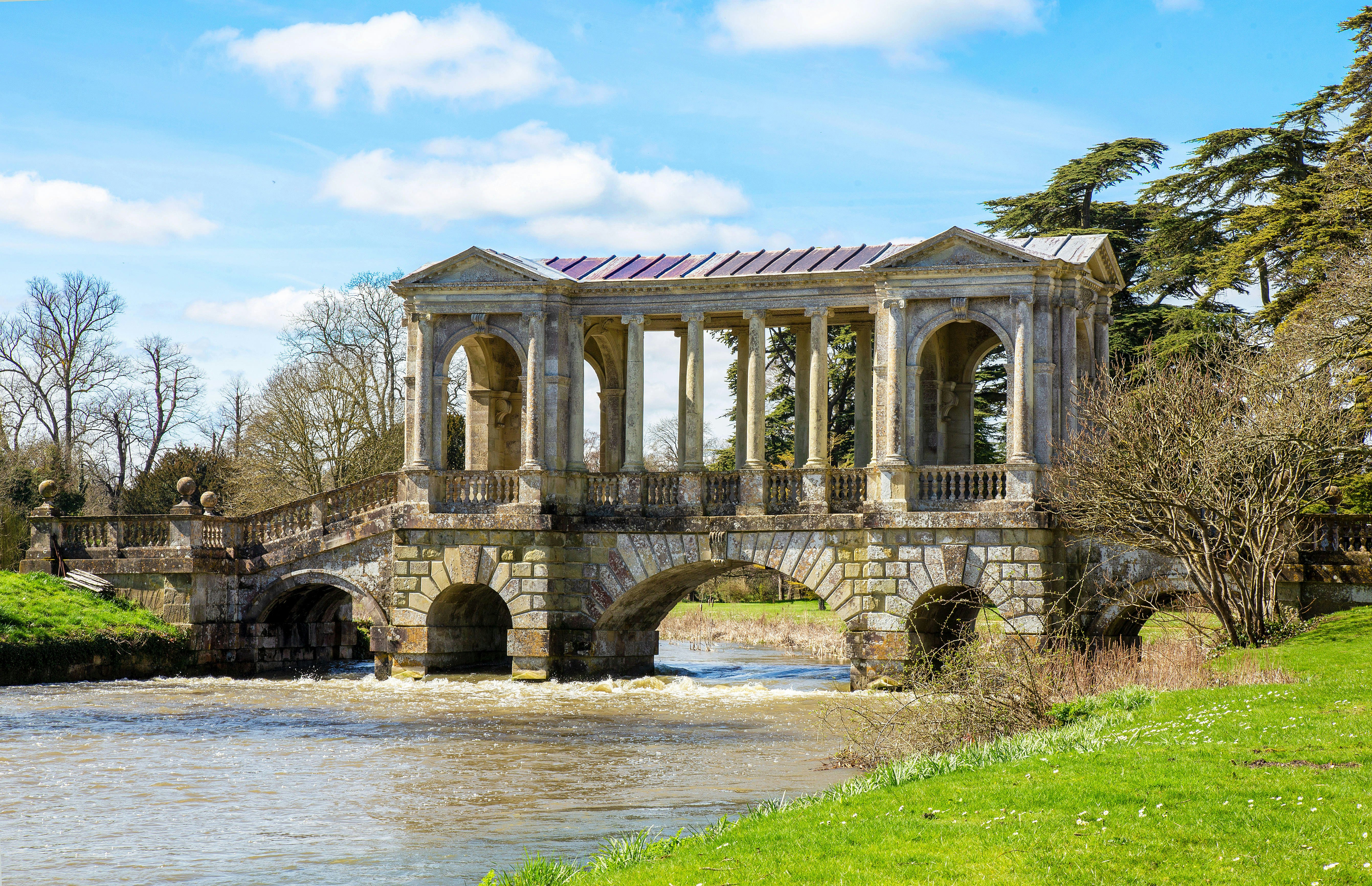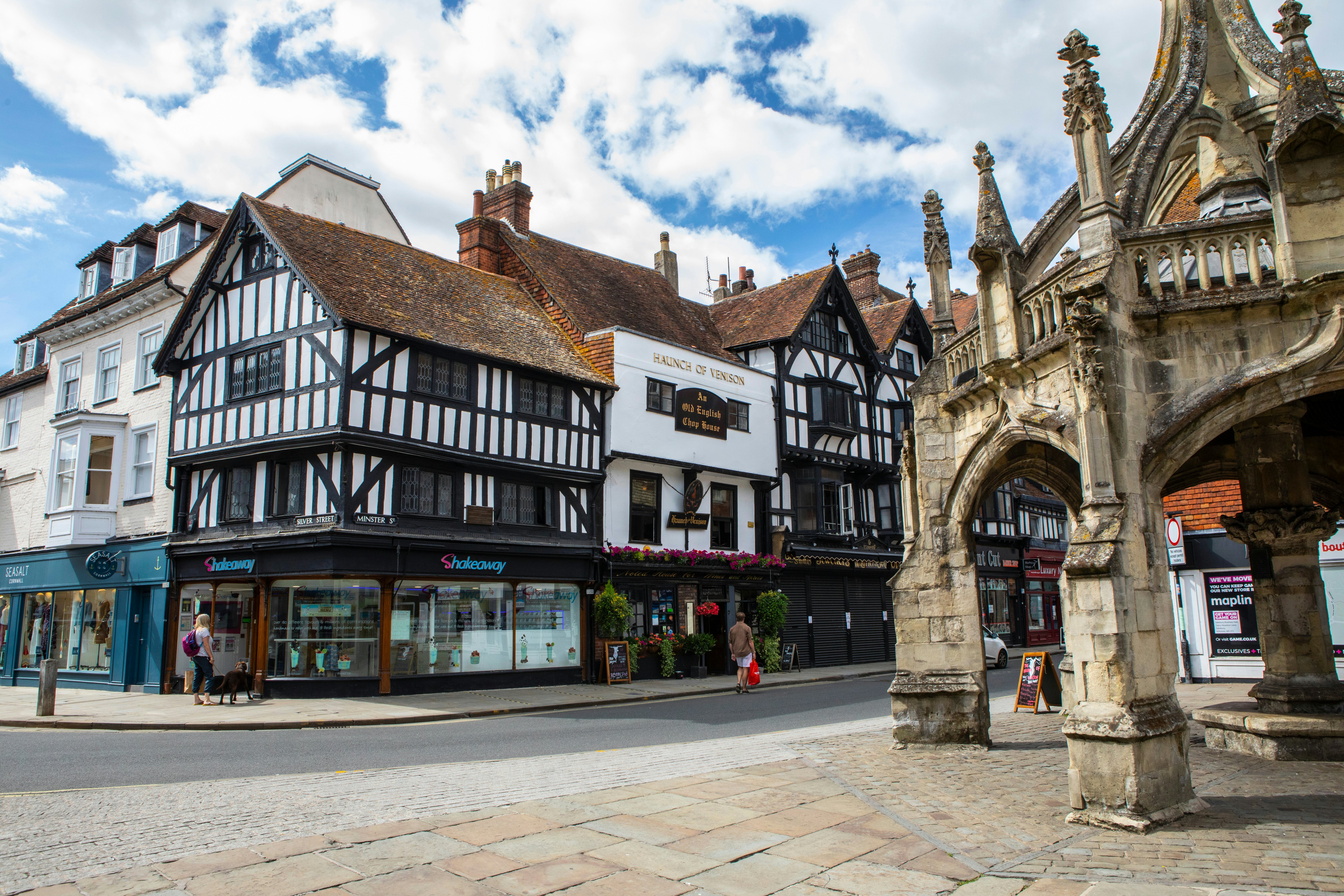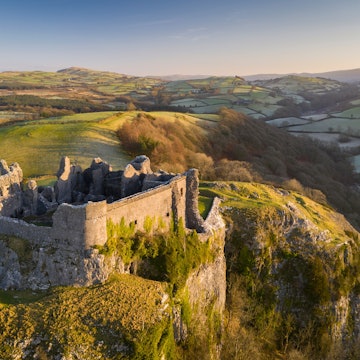
The 8 best things to do in and around Salisbury, England

Jun 26, 2025 • 9 min read

The historic town of Salisbury is the gateway to Stonehenge. Justin Black/Shutterstock
The town of Salisbury in southwest England has been a cultural hotspot for nearly a thousand years – and the surrounding countryside has buzzed with human activity for close to 5000 years, particularly around nearby Stonehenge. The region is one of the best places in the country to connect with the history of England through the ages.
Nestled at the convergence of the Rivers Avon and Nadder, this pretty city is centered on its famous cathedral – and there’s plenty more to see in town before you roam out to Stonehenge and other historical wonders beyond the city limits. The streets of Salisbury form an architectural timeline, spanning medieval walls and religious buildings, half-timbered Tudor townhouses, grand Georgian mansions and Victorian villas.
While majestic Salisbury Cathedral takes top billing – it’s surrounded by the largest cathedral close in the country and capped by the tallest spire in Britain – there are plenty of artisan bakeries and arty cafes to pop into while wandering the town’s historic streets. Or you could grab a picnic for a walk through water meadows captured by painter John Constable in the 1800s.
From climbing the cathedral and gazing in wonder at Stonehenge to country walks and trips to stately homes, here are the top things to do in and around Salisbury.

1. Appreciate the grandeur of Salisbury Cathedral
Few of England’s churches can hold a candle to the grandeur and sheer spectacle of 13th-century Salisbury Cathedral. This architectural wonder has pointed arches and flying buttresses, as well as Britain’s highest spire, biggest cloisters and largest cathedral close, spanning 32 hectares (79 acres). It’s home to one of the most important documents in the country: one of only four original parchment copies of Magna Carta, England’s first bill of rights, issued in 1215.
The elaborate cathedral was built between 1220 and 1258 in the early English Gothic style. In the north aisle, look out for a fascinating medieval clock, probably the oldest working timepiece in the world, dating from 1386. Outstanding statuary and tombs line the sides of the tall, narrow nave, including the grave of William Longespée, son of Henry II and half-brother of King John. When his tomb was excavated, a well-preserved rat was found inside Longespée’s skull; intriguingly, it had died of arsenic poisoning.
Salisbury’s 123m-high (403½ft) crowning glory, its spire was added in the mid 14th century. Weighing around 6500 tonnes (7165 tons), it required an elaborate system of cross-bracing, scissor arches and supporting buttresses; look closely and you’ll see the weight has buckled the four central piers of the nave.
Planning tip: For an insider’s perspective, be sure to book a tower tour to wind your way up 332 spiraling steps to the base of the spire, 68m (223ft) above the ground.
2. Read up on English history at the Salisbury Museum
The Salisbury Museum covers every major period in the region’s history – but it’s the hugely important archaeological finds in the Wessex Gallery that make this a must-visit, especially if you’re going on to visit nearby Old Sarum and Stonehenge. Consider it a quick education on the history of ancient England.
Look out for the bones of the Stonehenge Archer, a man found in the ditch near the famous stone circle, and the similarly curled-up skeleton of the Amesbury Archer, considered the most significant late Neolithic burial ever found in the UK. Also here is the rat found in William Longespée’s tomb at Salisbury Cathedral.

3. Get caught up in the drama of Inigo Jones’ Wilton House
Located 3 miles (4¾km) west of the center of Salisbury, stately Wilton House provides fascinating insights into the rarefied world of the British aristocracy. The home of the Earls of Pembroke since 1542, it has been expanded, improved and embellished by successive generations, creating a fascinating record of changing architectural tastes.
Wilton was rebuilt after a fire in the mid-1600s by legendary English architect Inigo Jones, whose best work was done in the striking Single and Double Cube rooms, constructed in Palladian style and stuffed with the earls’ superb collection of paintings (including works by Van Dyck, Rembrandt, Reynolds and Tintoretto). The architectural finery spills into the grounds in the form of landscaped gardens, follies and an elegant Palladian bridge over the River Nadder.
You might recognize the house from its many movie cameos. Wilton House stood in for other historic homes in The Madness of King George (1994), Sense and Sensibility (1995) and Pride and Prejudice (2005), among other blockbusters.
4. Step back in time at Old Sarum
The vast, ruined stone ramparts of Old Sarum – which preceded Salisbury by around 1500 years – sit on a turf-covered hill, 2 miles (3¼km) north of the modern city. The site began life as a hill fort during the Iron Age, was later occupied by both the Romans and the Saxons, and evolved into an important medieval town centered on a Norman castle.
William the Conqueror convened one of his earliest councils here, and the first cathedral was built in 1092, snatching the bishopric from nearby Sherborne Abbey. But Old Sarum was short on water and exposed to the elements; it was abandoned after just 50 years, when the monks decided to up sticks and start a new cathedral in nearby New Sarum (as Salisbury was known until surprisingly recently).
Planning tip: Today, you can wander the grassy Iron Age defenses and see the original cathedral’s stone foundations. Combine a visit with a peaceful riverside stroll in the Avon Valley Nature Reserve, less than a mile southwest. Download the Salisbury and Wilton Walking Map from the Visit Wiltshire website for more recommended walks.

5. Sample the bounty of Wiltshire at Salisbury’s restaurants
With fertile farmland and livestock meadows on all sides, Salisbury receives premium produce straight from the fields, including meats from rare and unusual breeds. For lunch, drop into Fisherton Mill – an art and crafts gallery whose laid-back cafe offers a surprisingly refined lunchtime menu, including such treats as deli-style pastrami sandwiches, and asparagus and ricotta tart.
For a more formal meal, dine among wood-paneled snugs and crooked ceilings in the creaky, 14th-century Haunch of Venison pub. It has a great menu of hearty dishes made with local ingredients, including plenty of that eponymous venison. Take things up a notch at Allium, where you can enjoy impeccable, richly flavored dishes based on choice ingredients such as pork belly, guinea fowl and cod cheeks, while looking out on the town’s market square.
Planning tip: For an after-dinner drink, beer enthusiasts rate the Haunch of Venison. Other worthy drinking holes include the Duke of York and Campaign for Real Ale favorite the Village Freehouse.
6. Enjoy stately homes with extras
If Wilton Hall has piqued your interest in the extravagant homes of the gentry, Salisbury is close to more stately residences that have a little something extra. About 26 miles (42km) west, Stourhead is the site of the grand home of the wealthy Hoare family; its biggest lure is the sprawling garden surrounding the elegant Palladian mansion.
Overflowing with temples and exotic trees, this magnificent example of 18th-century landscape gardening spreads across the valley. A picturesque 2-mile walking circuit will take you past ornate Georgian follies and around a centerpiece lake to the Georgian-era Temple of Apollo, where Matthew Macfadyen’s Mr Darcy unsuccessfully proposed to Keira Knightley’s Elizabeth Bennet in the 2005 film version of Pride & Prejudice.
A 20-minute drive to the north lies Longleat, the ancestral home of the Marquess of Bath. This grand Elizabethan estate was reinvented as Britain’s first safari park in 1966, transforming the Capability Brown–landscaped grounds into a drive-through world wildlife tour.
After meeting the lions, giraffes and wiper-chewing monkeys, book a tour of Longleat House, with its fine tapestries, heirloom furniture and lavishly decorated ceilings. Don’t miss the mansion’s seven libraries, and the extraordinary paintings and psychedelic murals created by the eccentric 7th Marquess, who was an art student in the 1960s.

7. Marvel at the size of Stonehenge
The world’s most famous ring of monolithic stones, Stonehenge is just 9 miles (14½km) north of Salisbury, so dropping by feels almost mandatory. Arguably England’s most emblematic ancient sight, this monumental stone circle has been attracting pilgrims, tourists and New Age travelers for over 5000 years, and it still hosts a massive party for the summer solstice each June.
Despite countless theories about the site’s purpose – perhaps it was a center for sacrifice, or an astronomical clock – no one knows exactly why ancient Britons devoted so much time and effort to its construction. Outside of the solstice celebrations, visitors have to view the stones from a distance to protect the site – and even from a distance, the towering sarsen stones are undeniably impressive, hinting at arcane beliefs and customs.
The construction of Stonehenge started in around 3000 BCE, with the excavation of a circular bank and ditch, and 56 pits, some filled with cremated human remains. About 500 years later, Stonehenge’s stones were hewn and dragged here – some from Wiltshire’s Marlborough Downs, and some from as far afield as Pembrokeshire in Wales. The towering Great Trilithon stones create a gateway that perfectly frames the setting sun on midwinter’s day.
Detour: Stonehenge forms part of a huge complex of ancient monuments that you can explore if you have a vehicle. North of the circle lie the Cursus Barrows, a humped cemetery of Bronze Age burial mounds surrounding a massive raised earthworks. More burial mounds, the Old and New King Barrows, sit beside the Avenue, a ceremonial pathway that once linked Stonehenge with the River Avon, 1½ miles (2½km) away.
8. Take a day trip to Avebury
About 35 miles (56km) north of Salisbury – close enough for a day trip – the village of Avebury is home to the largest stone circle in the world. At nearly 350m (1148ft) wide, it’s four times the size of Stonehenge, and it was erected at around the same time, from 2500 to 2200 BCE. There were originally 98 standing stones surrounding the two inner circles, though many were lost or toppled over time.
Unlike Stonehenge, you can wander freely around Avebury, and visiting at dawn or dusk is particularly evocative of ancient times. The village has grown up in and around the henge; this is one of the only places in the world where you can have a drink inside a stone circle, at the Red Lion pub. Start on the High St and walk round the stone circle in an counterclockwise direction to get a sense of its true scale.
The northwest sector has the most complete collection of standing stones, including the massive 65-tonne (72-ton) Swindon Stone, one of the few never to have been toppled. The standing stones in the Southwest Sector include the Barber Surgeon Stone, named after the skeleton of a man found beneath it.
Planning tip: Find out more about the history of the Avebury henge in the Alexander Keiller Museum on the grounds of Avebury Manor – named after the archaeologist who supervised the raising of many of the fallen stones in 1934. Other worthwhile stops in the area include the 4500-year-old mound of Silbury Hill and the West Kennet Long Barrow tomb.
This article was adapted from Lonely Planet’s England guidebook, published in June 2025.














